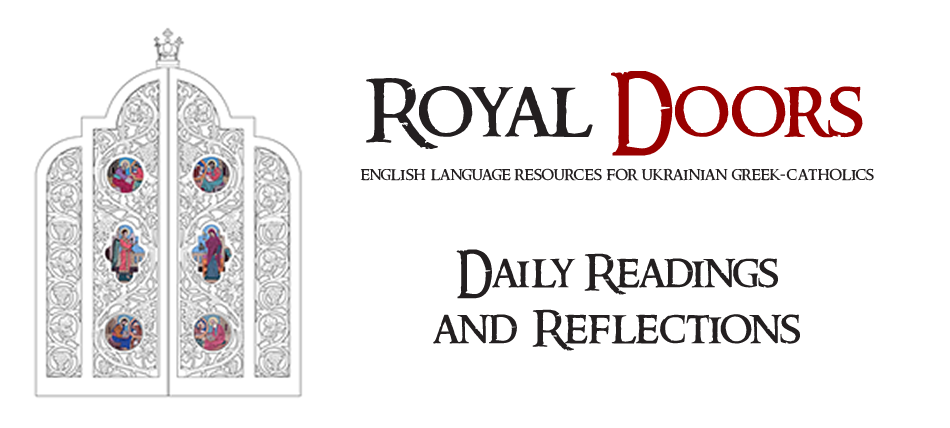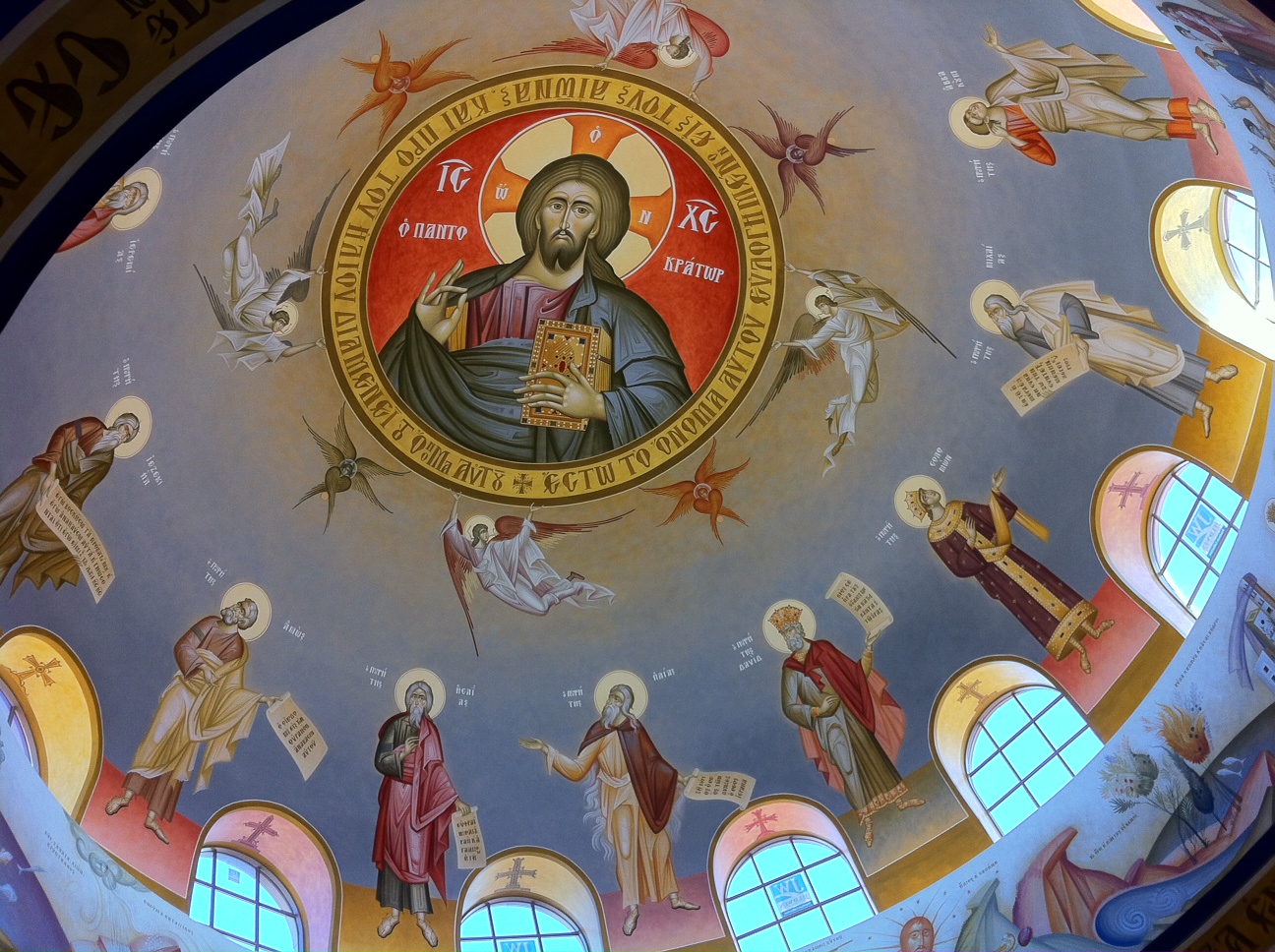When the Risen Christ joined the disciples on the road to Emmaus, the Gospel says that, “beginning at Moses and all the Prophets, He expounded to them in all the Scriptures the things concerning Himself” (Luke 24:27). Where and how did Moses and the prophets speak of Jesus, whom the biblical teachers of His day did not recognize? The Church Fathers described the references to Christ in the Old Testament as a typology.
A Biblical “type” is a person or event which points beyond its original meaning to something greater to come. The human author – Moses or the prophets – probably had no idea that Christ was hidden in what they described. But the Scriptures have more than human authors; they have the Holy Spirit inspiring these writers to express His own divine understanding in these sacred texts.
The Scriptural canticles sung at Matins (Orthros) on the weekdays of the Great Fast are of meaning to us because of the typology they contain. Each of them speaks of a character (or the whole of Israel) in some kind of distress who is delivered by God their Savior and Redeemer. They are “types” of the ultimate deliverance – from eternal death – effected in Christ.
The Canticle of Hannah (1 Samuel 2:1-10)
This canticle, sung at Wednesday Orthros, is the joyful response of the previously childless Hannah at the birth of her son, the prophet Samuel. As she told the priest Eli, “For this child I prayed, and the Lord has granted me my petition which I asked of Him. Therefore I also have dedicated him to the Lord; as long as he lives he shall be dedicated to the Lord” (1 Samuel 1:27-28).
Hannah’s song – so much like the canticle of the Virgin – celebrates God as the One who reverses our normal expectations. He gives power to the powerless and wealth to the poor: “Those who were full have hired themselves out for bread, and the hungry have ceased to hunger… He raises the poor from the dust and lifts the beggar from the ash heap, to set them among princes and make them inherit the throne of glory” (v. 5, 8). He has given a son to the childless and will give victory to the king.
The conception by the childless Hannah is a type pointing to the conception of John the Baptist by the childless Elizabeth and to that of Christ Himself, the ultimate conception by the power of the Holy Spirit. It is He whom God will bless as the definitive Anointed One, the Messiah. “He will give strength to His king, and exalt the horn of His anointed” (v. 10).
The Canticle of Habbakuk (Habbakuk 3:1-19)
The Book of Habbakuk, from which Thursday’s canticle is taken, was written at the start of the Israelites exile to Babylon. Habbakuk sings in his distress at the Jewish defeat, “In Your wrath remember mercy” (v. 2).
The prophet looks forward to God coming to defeat the invaders and save the Israelites: “God comes from Teman; the Holy One from Mount Paran…You come forth for the salvation of Your people, for salvation with Your Anointed” (vv. 3, 12). He proclaims His confidence in God despite the disaster which has befallen Israel: “Though the fig tree may not blossom, nor fruit be on the vines; though the labor of the olive may fail, and the fields yield no food; though the flock may be cut off from the fold, and there be no herd in the stalls— yet I will rejoice in the Lord, I will joy in the God of my salvation. The Lord God is my strength…” (vv. 17-19).
We know nothing about this prophet from the book named after him. There is, however another reference to him in Jewish writings which helps us see Habbakuk himself as a type of Christ.
Bel and the Dragon tells us a story about Habbakuk and the prophet Daniel. Although this book, found in the Greek Septuagint, is not in the Hebrew Bible, it is a recognized part of Jewish lore. Refusing to partake of pagan worship in Babylon, Daniel is thrown into the lions’ den. An angel transports Habbakuk from Jerusalem to bring food to Daniel and then returns him home. The king comes to the den, expecting to find Daniel’s remains; instead he sees Daniel, in the best of health, sitting in the midst of the lions.
By a heavenly intervention Habbakuk enters the lion’s den to nourish Daniel who is imprisoned there. In this he is a type of Christ who enters the broken world in which we are imprisoned, for our salvation. The words of this canticle, “God comes from Teman; the Holy One from Mount Paran” are repeated frequently during the Feast of Christ’s Nativity to emphasize that Christ’s coming is the ultimate fulfillment of Habbakuk’s prophecy.
The Canticle of Isaiah (Isaiah 26:9-20)
Like other prophets, Isaiah lived at the time when Israel was beset by one invader after another. In this canticle he admits that the nation is powerless to achieve deliverance on its own. Isaiah employs the image of a miscarriage to portray Israel’s inability to revive the nation. “As a woman with child is in pain and cries out in her pangs when she draws near the time of her delivery, so have we been in Your sight, O Lord. We have been with child, we have been in pain; we have, as it were, brought forth wind. Salvation we have not achieved for the earth, the inhabitants of the earth cannot bring it forth” (vv. 17-18).
Yet, the prophet insists, “Your dead shall live; together with my dead body they shall arise. Awake and sing, you who dwell in dust; for your dew is like the dew of herbs, and the earth shall cast out the dead” (v. 19). It is God who will restore the nation and bring it back to life.
This prophecy was realized when Zerubbabel and Joshua brought the Jews back from exile after the Babylonian captivity; but its ultimate fulfillment was the resurrection of Christ from Hades, bringing with Him the human race which was so powerless to save itself. Thus the restoration of Israel, for which Isaiah longed, would be seen as a type of the restoration of mankind in Christ.
The Canticle of Jonah (Jonah 2:2-9)
The canticle of Jonah, his prayer from the belly of the creature which had swallowed him, occasions his deliverance. “Out of the belly of Sheol I cried, and You heard my voice…You have brought up my life from the pit, O Lord, my God” (Jonah 2:2,6).
While Hannah and Habbakuk point us toward the incarnation of Christ, Isaiah and Jonah foreshadow His resurrection. Christ Himself indicated that Jonah’s experience in the belly of the sea monster was a type of the Lord’s burial and resurrection: “For as Jonah was three days and three nights in the belly of the great fish, so will the Son of Man be three days and three nights in the heart of the earth” (Matthew 12:40). As God restored Jonah “from the pit,” He raises Christ from the dead.
This canticle is the inspiration for the Sixth Ode of our Canons. During the Fast it is sung only on Saturday and Sunday. The following echoes of Jonah’s canticle are sung on Sundays according to the tone of the week:
Tone 1: “The depth of the abyss surrounds us and no one can deliver us; we were led as sheep to the slaughter. Save Your people, O God, for You are the strength of the weak and the One who lifts them up.”
Tone 7: “Sailing across the ocean which swells with the cares of this life, swallowed up in the midst of my sins and thrown to the monster who devours souls, I cry to You, O Christ: save me from this deadly abyss.”

